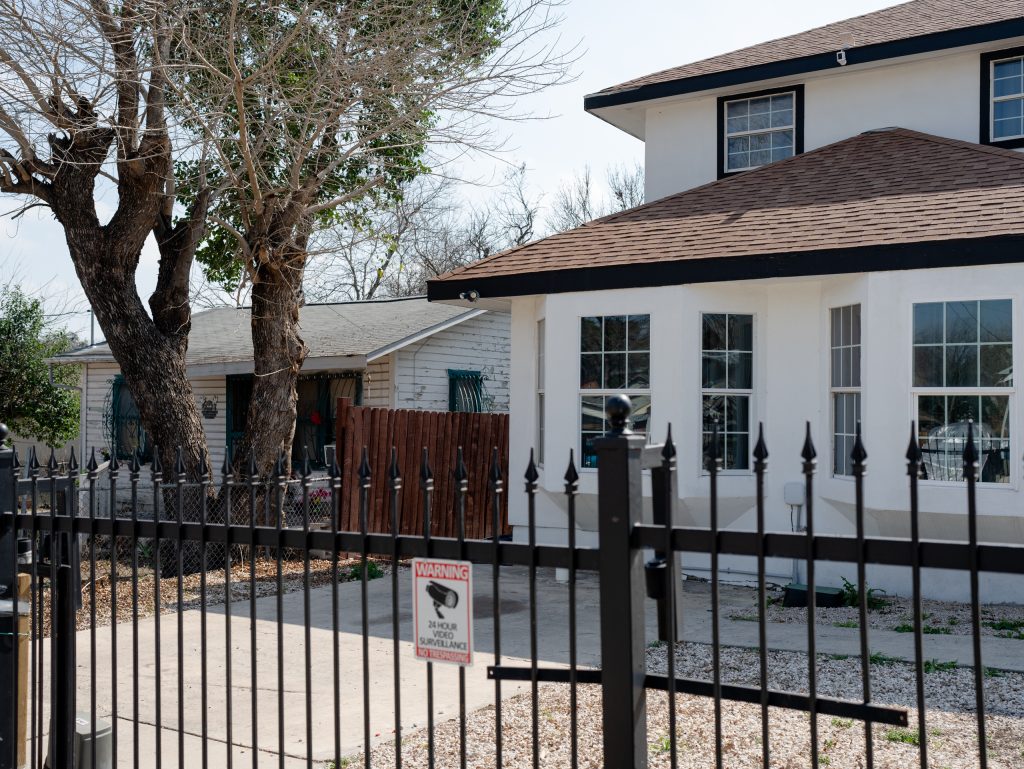As a whole, homeowners in the City of San Antonio and Bexar County are getting an estimated $61 million discount on their property tax bills because of inequitable home value assessments, according to a new study.
And the biggest breaks are given to high-dollar homes.
Homes of the lowest value in the County are overtaxed compared to homes that are worth more, according to the Bexar County data analysis that is part of a larger report called “Economics of Community Development” by private consulting firm Urban3. The North Carolina-based firm was commissioned by the local H.E. Butt Foundation and the San Antonio Board of Realtors (SABOR) to conduct the study.
In 2023, affluent and white neighborhoods were more likely to get a discount on their valuations and tax bills while lower income and non-white homeowners were overvalued and overpaying, said Joe Minicozzi, author of the study and founder of Urban3.
He will present his findings at 6 p.m. on Monday during the first installment of the foundation’s “Everyone Needs a Home: A Housing Summit Series” at the Whitley Event Center.
The series is part of the Know Your Neighbor a program, which convenes learning experiences and community conversations on economic segregation in San Antonio.
“Our call to action is learning …. getting to know who your neighbors are and what they’re experiencing — especially in a city that is struggling with decades and decades of economic segregation,” said Patton Dodd, executive director of storytelling and communications for the Foundation.
Economic segregation “expresses itself in all kinds of ways — only one of which is housing — but housing is a big one,” Dodd said.
San Antonio is one of the more than 200 cities that used now-illegal redlining practices in the 1930s to prevent non-white people from purchasing homes in neighborhoods deemed “desirable” while devaluing Black and brown neighborhoods.
Urban3’s findings regarding inequitable property tax assessment in Bexar County echo those found in other jurisdictions across the U.S.
“This is a legacy effect tantamount to redlining that’s designed into the tax system,” Minicozzi said.
“I’m not calling [property tax assessors] racist or classist, I’m just saying the data is showing that there are race and class differences,” he said.

Compared to an affluent zip code in Alamo Heights, “you’re twice as likely to be over-assessed on the South Side,” Minicozzi said.
The Monday event also includes a 4:30 p.m. presentation called “Who Owns San Antonio? And Where Did They Go?” during which researchers from Community Information Now will present data on the rise of absentee homeownership across the city.
Other events and workshops in the series will be scheduled over the coming weeks and months, Dodd said.
Conversations around complicated tax policy and systemic inequities can often be riddled with jargon and cause people’s eyes to glaze over, Minicozzi said. He promises the opposite.
“It’s a three-act play when I’m out there,” he said of his accessible, engaging presentation filled with visuals.
“What I’m showing you is some crazy computer technology,” Minicozzi said while sharing some of his data visualizations. “This stuff wasn’t around in the late 1800s when these policies were written. So now we can actually look at them. I can show you these [metaphorical] CAT scans and say: ‘Oh, you’ve got spots on your lungs. You might want to stop smoking.’”
‘Flying blind’
Texas is one of 13 so called “non-disclosure” states when it comes to real estate prices — which makes data analysis and home valuation processes harder. There is no law that requires homebuyers or sellers to tell the state government, including appraisal districts, with sales price information.
At the same time, the constitution requires that “all taxation shall be equally in uniform” and state law requires that “all taxable property is appraised at its market value.”
Essentially, the appraisal district is required to appraise homes and commercial property at market value, but in nondisclosure states, it doesn’t actually know how much property is selling for in the market.
“In defense of the assessor or your appraiser, it’s like they’re kind of flying blind,” Minicozzi said.
For the study, SABOR provided aggregated sales price data that allowed the Urban3 team to get a more accurate picture, or scan, of the real estate landscape as long as individual sale prices are kept confidential.
“SABOR is … making sure that we’re leveraging our data for the benefit of the community,” said Gilbert Gonzalez, the agency’s CEO. “It’s opening it up in a way that we haven’t in the past to make sure that our community partners are able to do good work to support initiatives like this.”
As a policy, SABOR does not provide sales prices to the appraisal district, Gonzalez said.
“An individual can choose to disclose that information as they want,” he said. “We, as an organization, respect that right of the individuals to make that decision so we don’t provide it.”
Absent that SABOR date, the Bexar Appraisal District uses aggregated, neighborhood wide or “mass appraisals,” to determine property values — but it can’t see which individual property sold for how much, said Rogelio Sandoval, chief appraiser. “Whatever those sales are indicating — whether an increase or decrease — that’s going to dictate what the neighborhood does.”
All property owners have a right to appeal their valuations, whether they increase, decrease or stay the same year-to-year.
The value assessment process is not discretionary, Sandoval said, “it’s required by law. The discretionary part comes in the second part of the tax bill calculation, which are the tax rates.”
When it comes to inequitable valuations and tax collection, San Antonio is not the worst in the U.S. or in Texas, Minicozzi said.
Bexar County ranks higher than average compared to other jurisdictions across the country, according to a national property tax analysis out of University of Chicago’s Harris School of Public Policy.
While the study doesn’t come with policy recommendations — it’s an analysis of how the system is functioning now — “I would argue that the system needs a change … that we need to really rethink municipal tax systems because of the opacity of the system,” Minicozzi said.
“If I don’t know how that how the knobs work on the sound board, but I know I’m getting feedback,” he added, using another metaphor. “I’m gonna go talk to the sound board guy and say: What’s happening, and they’re gonna tell me which knob to turn.
“Why is it we can’t figure this out with our [property] assessment system?” he said.
Dodd hopes the community, including elected officials and advocacy groups, can use Minicozzi’s analysis to develop policies that close the property tax gap.
“Growing in awareness and understanding is step one,” he said. “There’s all kinds of things that can happen from there.”
Disclosure: The H.E. Butt Foundation is a financial supporter of the San Antonio Report.







